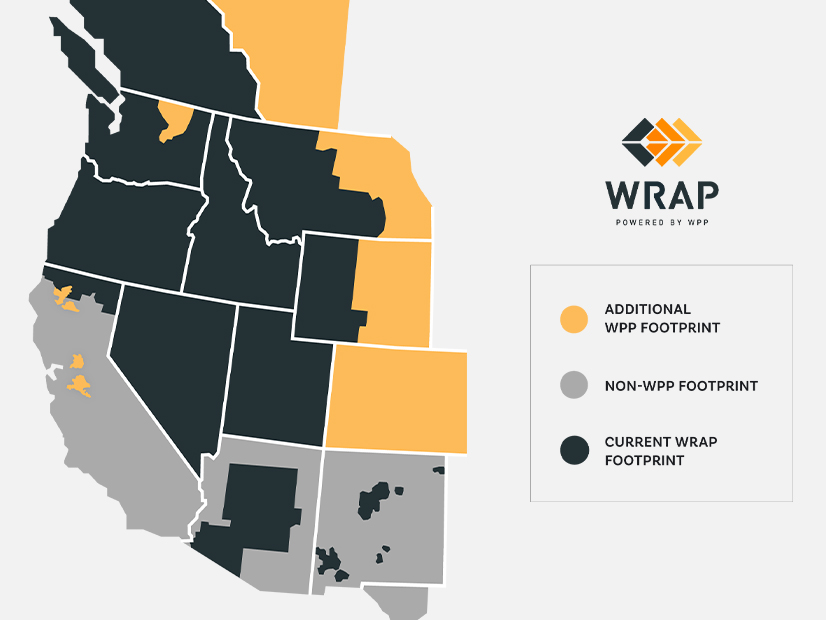
The Western Resource Adequacy Program’s key stakeholder body on Aug. 29 approved a plan that would postpone the start of the WRAP’s penalty phase by one year, to summer 2027.
The vote by the Resource Adequacy Participants Committee (RAPC) comes months after committee members issued an April 22 letter seeking to delay the “binding” phase of the voluntary program, which is operated by the Western Power Pool (WPP). (See WRAP Participants Seek 1-Year Delay to ‘Binding’ Operations.)
That letter cited the “significant headwinds” many Western utilities face in securing enough resources to avoid incurring penalties. The difficulties listed included supply chain issues, faster-than-expected load growth and extreme weather events that have “further challenged” regional assumptions about the volume of generation needed to maintain reliable grid operations.
Before circulation of the April letter, WRAP participants faced a May 31 deadline to commit to binding operations for summer 2026. The “transition plan” the RAPC approved Aug. 29 “outlines a gradual path to fully implement the WRAP” by pushing back the binding phase deadline and temporarily reducing program penalties for participants short on RA, according to a statement from the WPP.
“The plan helps in three critical ways,” WPP CEO Sarah Edmonds said in the statement. “It moves the program forward with participants engaged and committed and on a path to fully binding in 2027, which was essential after the concerns they raised in April. It allows the program to pool resources and provide support for participants in need, helping reliability in the region. And it allows participants to work to address resource adequacy.”
Under the new plan, WRAP participants will be required to provide their notice of intent to go binding for summer 2027 by January 2026, rather than the previous deadline of May 2025.
“The extra time to resolve uncertainties may enable more binding participation. All participants will be binding for winter [2027]/28,” the WPP statement said.
The plan also extends the WRAP’s “transition period” by one year to March 2029. During that period, participants who enter the binding phase but remain deficient in RA will be eligible to pay a “discounted deficiency charge” if they demonstrate “commercially reasonable efforts” to obtain WRAP Operations Program capacity but still fail to do so, what the program will consider an “excused transition deficit.”
“Participants who are deficient and pay the charges would have the same priority access to surplus capacity as other participants in the Operations Program,” according to the plan.
‘Critical Mass’
The new plan also introduces the concept of “critical mass” into the WRAP, defined as “the participating load volume and participant threshold for a [WRAP] subregion below which participants may participate in a nonbinding manner” after the conclusion of the transition period. The thresholds will be 15 GW of load and three participants for the Southwest/East Diversity Exchange (SWEDE) subregion and 20 GW of load and three participants for the Mid-C subregion on the Northwest.
Accompanying that new concept are WRAP tariff changes that would allow participants in a subregion to choose to be nonbinding for seasons when critical mass is not achieved.
“Once WPP has given notice to participants that their subregion does not have critical mass, such participants will have 30 days to provide notice to WPP if they intend to participate as nonbinding participants for that binding season,” the updated tariff would read. “Such notice and election will be given similarly for each season without critical mass participation.”
Another change seeks to help participants in either WRAP subregion more easily meet their RA requirements by tapping the potential for “diversity sharing” across the WRAP’s entire footprint via transmission connectivity, allowing utilities to count more distant resources in their RA forward showings (FS).
That part of the plan would assume that 500 MW of transmission capacity will be available for south-to-north flows between the subregions in winter, while the same volume would be available for flows in the opposite direction during summer. It would not reduce the WRAP’s total planning reserve margin.
“The extent of any reductions in Subregion FS Planning Reserve Margins should not fall below the WRAP Region PRM,” the plan said.
WPP also noted that it will work with the operators of CAISO’s Extended Day-Ahead Market and SPP’s Markets+ to replace the 500-MW figures with “more accurate numbers.” Those numbers likely will be significantly affected by the eventual geographical footprints of the two markets. The viability of the WRAP is particularly important for Markets+ because its participants will be required to participate in the program.
Speaking at the spring joint meeting of the Committee on Regional Electric Power Cooperation and Western Interconnection Regional Advisory Body in Denver in April, Edmonds said WRAP participants were still “unwaveringly committed” to the program and that the challenges utilities face in meeting RA requirements only further illustrate the need for the program.
“The important thing is getting the program off the ground and addressing reliability in the region,” Edmonds said in the Aug. 29 statement. “These changes allow us to do that. Everyone can be part of and benefit from the program, while working to add resources to address any deficiencies. Meanwhile, we’ll continue to get critical insights about resource adequacy gaps from the nonbinding period.”
The transition plan is open for public comment and will be reviewed by the WRAP’s Committee of State Representatives before going to a vote by WPP’s Board of Directors. The plan’s associated tariff changes also must be approved by FERC.


